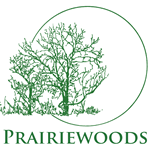 I’m Otis, Prairiewoods’ favorite squirrel, and I’ve taken over this blog for 2016 in honor of Prairiewoods’ 20th anniversary. You’ll hear from me or one of my friends each Friday.
I’m Otis, Prairiewoods’ favorite squirrel, and I’ve taken over this blog for 2016 in honor of Prairiewoods’ 20th anniversary. You’ll hear from me or one of my friends each Friday.
During this school year, I have become friends with a local college student, Katie Gerhart. She is a student at Coe College double majoring in Environmental Studies and English. (And although squirrels aren’t great at English, we’re proficient in Environmental Studies!) During this school year, Katie is working at Prairiewoods as an AmeriCorps intern. Here are her thoughts on Prairiewoods’ LEED Gold certification …
Part of my internship at Prairiewoods involves doing research on current environmental practices, both at Prairiewoods and in the surrounding community. This fall I was handed a massive binder titled “LEED Application with Documentation: 2012” and was asked to read through it to my heart’s content. My supervisor knew that, realistically, I could not get through the 10-pound behemoth, so she recommended that I skim the technical jargon and spend more time on what interests me. As I began reading it, I encountered an undeniable problem: the binder is full of information that is both extremely interesting to me and pertinent to my studies.
Upon receiving the binder, I was excited to discover how Prairiewoods received its prestigious LEED Gold Certification. As an Environmental Studies student, I had heard of LEED and equated it to environmental excellence in an institution. However, I was clueless about how to become certified, which rankings were offered, and even about what LEED stood for. Luckily, The Binder was full of handy information.
 LEED, or Leadership in Energy and Environmental Design, is a certification offered to institutions who apply through the U.S. Green Building Council. The application is quite lengthy and very detailed. It requires documentation on everything from the size of the buildings to the cleaning products used. Often, an engineer is hired prior to submitting the application to help assess the current environmental standard and to offer suggestions to earn points on the LEED application. The points earned on a LEED application are out of 100 and relate to specific environmental techniques reflected in the building, design, and operation of an institution. The final score given to the application is assigned to a certain level of certification: Certified, Silver, Gold, or Platinum (with Platinum being the highest level possible).
LEED, or Leadership in Energy and Environmental Design, is a certification offered to institutions who apply through the U.S. Green Building Council. The application is quite lengthy and very detailed. It requires documentation on everything from the size of the buildings to the cleaning products used. Often, an engineer is hired prior to submitting the application to help assess the current environmental standard and to offer suggestions to earn points on the LEED application. The points earned on a LEED application are out of 100 and relate to specific environmental techniques reflected in the building, design, and operation of an institution. The final score given to the application is assigned to a certain level of certification: Certified, Silver, Gold, or Platinum (with Platinum being the highest level possible).
The fact that Prairiewoods was granted LEED Gold certification in 2012 is a pretty big deal. Prairiewoods is the only nonprofit organization in Iowa to earn this certification based off of their preexisting building structure. Many institutions are keeping LEED certification in mind as they build new structures because LEED certification showcases environmental values and it can lead to government-issued incentives. However, Prairiewoods was set on becoming as environmentally conscious as possible before it was hip to be green.

Sister Helen Elsbernd, Bruce Hamous and Jean Barbaglia Wenisch, the team that secured LEED Gold certification for Prairiewoods in 2012
The Franciscan Sisters of Perpetual Adoration who founded Prairiewoods felt a deep connection to the land and committed themselves to “develop right relationships with all creation and promote sustainability of Mother Earth” (according to their Long Range Land Management Plan). The Sisters worked for a year to develop a common vision for Prairiewoods that revolved around human-Earth relations, and these ideas have been at the center of the organization ever since.
The opportunity to submit a LEED application doubles as an opportunity to physically show the relationship between Prairiewoods and the environment. As I leaf through The Binder, it is clear that years of hard work, dedication, and reflective thought are ever-present at Prairiewoods.
—Katie Gerhart, Prairiewoods’ 2015–2016 Intern

